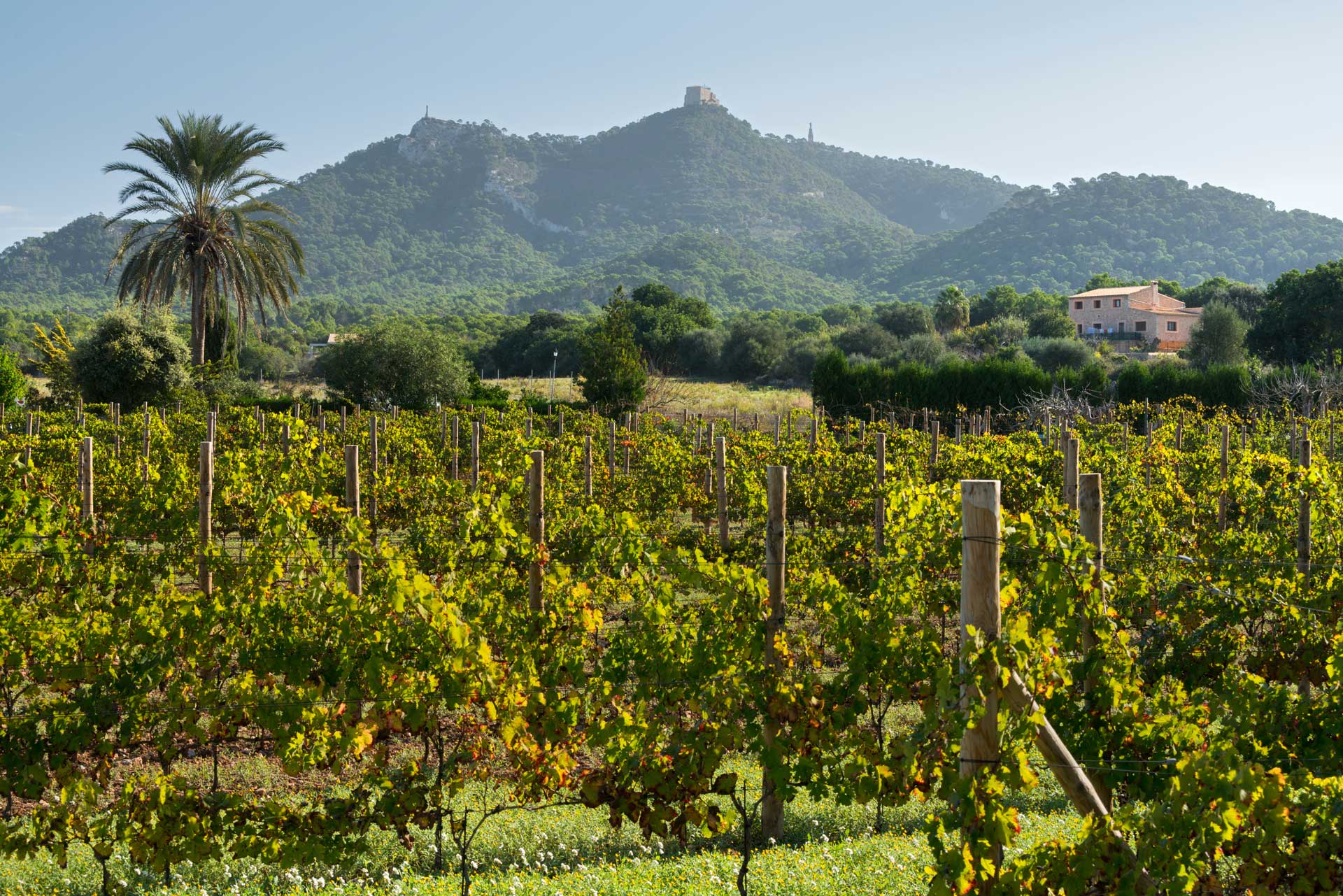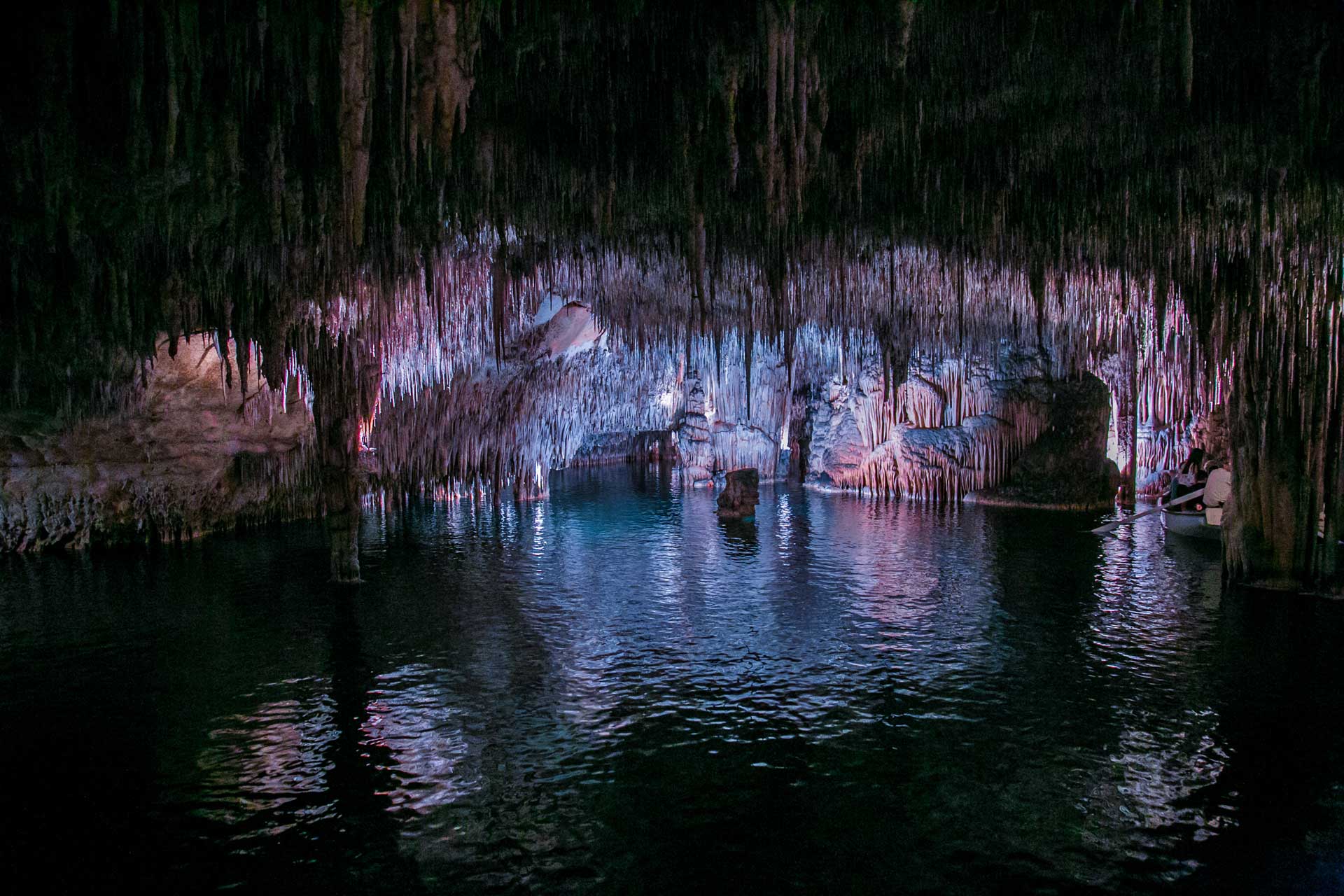Twice a year, Mallorca Cathedral offers a spectacle of light and symmetry that transforms its interior into an ephemeral work of geometry and spirituality. It is known as the phenomenon of 8, and takes place only on February 2 and November 11, when the rising sun passes through the main rose window of the apse and projects its image with absolute precision onto the opposite rose window, forming a perfect figure for a few minutes: an eight of light suspended above the high altar.
This phenomenon is not the result of chance. It combines medieval engineering, astronomical knowledge, and profound religious symbolism. Contemplating it is no longer a secret among devotees or architects, and has become an experience that draws believers, the curious, and lovers of mathematical beauty. To fully enjoy it, it is important to know when to go, how to enter, and why this fleeting moment is so exciting for those who witness it.
Contenidos / Contents
What is the phenomenon of the 8 in Mallorca Cathedral
The so-called phenomenon of the 8 occurs when the first rays of the sunrise pass through the large eastern rose window of Mallorca Cathedral—known as the eye of Gothic architecture—and its colored light is projected precisely onto the interior wall where the western rose window is located, creating a double, symmetrical figure. For a few minutes, both circles—the real one and the projected one—form a perfectly aligned image in the shape of a vertical eight.
This is not a one-off effect, but an event measured with architectural precision. For it to occur, the position of the sun on the horizon must coincide exactly with the longitudinal axis of the temple. This alignment only happens twice a year and lasts only a few moments, when the atmosphere is still clear but the sun has not yet risen high.
The result is a multicolored luminous figure, composed of the intense tones of the main rose window—reds, violets, greens, and yellows—that seem to float in the air. Many interpret this image as a symbol of infinity, others as the union between heaven and earth, or as a representation of eternity and rebirth, given its shape and its appearance on dates with strong symbolic significance.
Practical information summary
Below is a summary table with key information for planning your visit to see the phenomenon of the 8 at Mallorca Cathedral:
Aspect
Details
Dates of the phenomenon
February 2 (Candelaria) and November 11 (San Martín)
Time of the phenomenon
Between 8:00 and 8:30 a.m. (visual peak around 8:10–8:20 a.m. approx.)
Doors open
7:15 a.m. (no access before this time)
Recommended arrival time
Before 7:00 a.m.
Access
Entrance through the Almoina door (east side of the Cathedral)
Entrance fee
Free (only during this event; the rest of the year, admission fee applies)
Duration of the phenomenon
Approx. 15–20 minutes from when it begins to form until it fades away
Advance booking
Not available. Access on a first-come, first-served basis until full capacity is reached
Practical tips
Arrive early, avoid large backpacks, wear warm clothing, remain silent
The main rose window: architecture, orientation, and symbolism
The phenomenon of 8 would not be possible without the existence of the main rose window of the Cathedral, one of the most admired pieces of European Gothic architecture. Measuring 11.85 meters in diameter, it is considered the largest rose window in the Gothic world in proportion to the size of its nave, and contains more than 1,100 lead-free stained glass panes, which intensify the transparency and purity of the light.
Its geometric design is based on a six-pointed star, a motif that combines mathematical proportion and religious symbolism. This type of structure is not only decorative: it is designed to capture and project light in a controlled manner, like a solar instrument.
The key to the phenomenon lies in the exact orientation of the rose window towards the east. This alignment allows the rays of the rising sun on two specific days of the year to pass through the rose window at an angle completely perpendicular to the longitudinal axis of the nave. This precision is not the result of chance, but of the astronomical and construction knowledge possessed by the architects of the time.
The effect is completed by the existence of a second rose window on the opposite side (main façade), which is smaller and less complex, but positioned exactly in line with the projection. The coincidence between the two—real light and architecture—is what gives rise to this double, perfectly aligned image.
Relationship with the mosque and orientation towards Mecca
One of the most fascinating aspects of the phenomenon of 8 is that its possibility arose centuries before the construction of the cathedral, when the main mosque of Madina Mayurqa stood on the same site. Like all mosques, its orientation was aligned with the qibla, that is, towards Mecca. After the Christian conquest of 1229, the cathedral was built on the same structural foundation, inheriting the orientation of the Islamic building.
What is astonishing is that this orientation, which obeys Islamic religious criteria, aligns so precisely with the position of the sun that it allows light to pass through the rose window at dawn on two key dates in the Christian calendar: February 2 (Candlemas) and November 11 (St. Martin’s Day). This has given rise to interpretations that combine architecture, astronomy, and theology, and even to hypotheses about a possible symbolic desire to unite both traditions.
Although the cathedral was extensively renovated in the 14th century in the Gothic style, the original axis was respected. This architectural gesture allowed for the preservation of an invisible heritage: the possibility that the building would capture the sun at specific times of the year with a precision that is still surprising today.
This confluence of cultures is engraved in stone, but also in light. The phenomenon of the 8 is, in a way, a luminous synthesis between Islamic heritage, Christian faith, and the cosmic order.

Why the number 8 is so symbolic
The number 8 has strong symbolic significance in Christian imagery. Since the early centuries of Christianity, it has been associated with resurrection, spiritual regeneration, and eternal life. While the number 7 represents the complete cycle of creation (seven days), 8 symbolizes a new beginning, the transcendence of the earthly, and the passage to a higher reality.
This symbolism is reflected in numerous architectural and liturgical elements. For example, many baptismal fonts are octagonal in shape, as baptism represents spiritual rebirth. Similarly, octagonal chapels and church floor plans mark spaces intended for the transition between the human and the divine.
When visitors to the Cathedral observe how two rose windows—one real and one made of light—align to form a figure in the shape of an eight, they are not just witnessing a play of light. They are witnessing a symbolic manifestation, in which architecture and the sun come together to project an image that evokes eternity (∞), the endless cycle, the continuity of the soul.
That is why, beyond its visual beauty, the phenomenon of the 8 is moving: because it silently conveys an ancestral message, rooted in both medieval mysticism and sacred geometry.
When does it occur and what time should you arrive?
The phenomenon of the 8 in Mallorca Cathedral can only be seen on two very specific dates of the year:
- February 2, the feast of La Candelaria
- November 11, the feast of San Martín
On both days, the solar alignment occurs with pinpoint accuracy just after sunrise. To fully enjoy the experience, it is important to know not only the date, but also the exact moment when the light passes through the rose window.
What time does it happen?
The phenomenon usually begins between 8:00 and 8:30 a.m., depending on the exact time of sunrise.
However, the Cathedral doors open at 7:15 a.m., exclusively on these two dates, to allow visitors early access.
What time should you arrive?
It is recommended that you be in the square and in the entrance queue before 7:00 a.m. Although admission is free, capacity is limited and fills up quickly, especially if it coincides with holidays or weekends.
How long does the phenomenon last?
The complete projection of the rose window on the opposite wall, forming the number 8, lasts a few minutes. The figure is created and fades away with the movement of the sun. The clearest visual effect usually occurs between 8:10 and 8:20 a.m.
What happens if it is cloudy?
The visibility of the phenomenon depends on atmospheric conditions. If there are many clouds on the horizon, the effect may not be visible or may only be partially visible. Even so, many people come for the experience of being in the Cathedral at such a symbolic moment.
How to access the Cathedral on those days
Mallorca Cathedral opens its doors exceptionally to allow entry to the phenomenon of the 8 only two days a year: February 2 and November 11. Although attendance has grown in popularity in recent years, entry is still free and access does not require prior reservation.
Access door
Entrance is through the Almoina door, located on the right side of the Cathedral (northeast side), next to the Episcopal Palace. Access is not through the main façade.
Opening hours
Access to the interior begins at 7:15 a.m., although many people begin to queue from 6:45 or 7:00 a.m. to secure a good spot from which to view the phenomenon.
Limited capacity
Once the maximum capacity allowed for safety reasons has been reached, no more people are allowed in, so it is essential to arrive early.
Practical recommendations
- Avoid carrying large backpacks or bulky items that may slow down the entrance checks.
- Wear clothing appropriate for the sacred place you are visiting and the season, as it is usually cold at that time of day.
- If you want to take photographs, prepare your camera in advance and bear in mind that tripods are not allowed in all areas.
- Remain silent during the projection: for many people, this is also a spiritual experience.
What to do after seeing the phenomenon
Once you have experienced the phenomenon of the 8th, the experience does not have to end there. Mallorca Cathedral and its surroundings offer many options to round off the morning with culture, history, and scenery.
Full tour of the interior of La Seu
From 10:00 a.m., the usual tourist visiting hours begin. You can purchase a ticket to discover at your leisure:
– The high altar designed by Gaudí
– The spectacular suspended baldachin
– The Chapel of the Holy Sacrament, designed by Miquel Barceló
– The Cathedral Museum, with sacred art, sculptures, and historical documents
Stroll through the Parc de la Mar
From the esplanade in front of the cathedral, you can walk through the Parc de la Mar, with privileged views of the Gothic silhouette of the temple reflected in the pond. It is a quiet place to contemplate what you have seen, take photographs, or sit in the sun.
Discover the old town
The Calatrava neighborhood and the streets adjacent to the cathedral retain their medieval layout. You can explore:
- The Palacio de la Almudaina, right next to the temple
- The cobbled streets that connect to the Town Hall, the Plaza de Cort, and the old Jewish quarter
- The small galleries, bookshops, and craft shops
Breakfast with a view
There are several traditional cafés and bakeries in the surrounding area where you can enjoy a Mallorcan breakfast of ensaimada, coffee, or fresh juice. Some establishments have terraces facing the sea or the city walls, ideal for ending the experience in a relaxed atmosphere.












